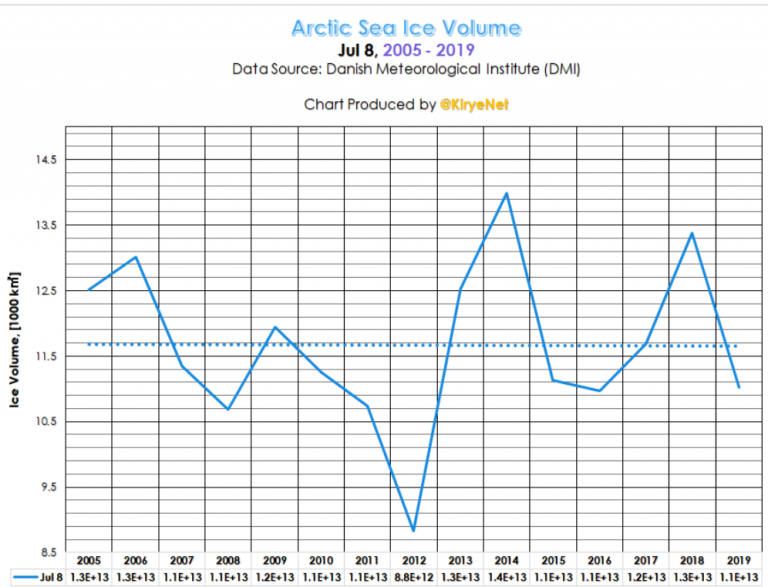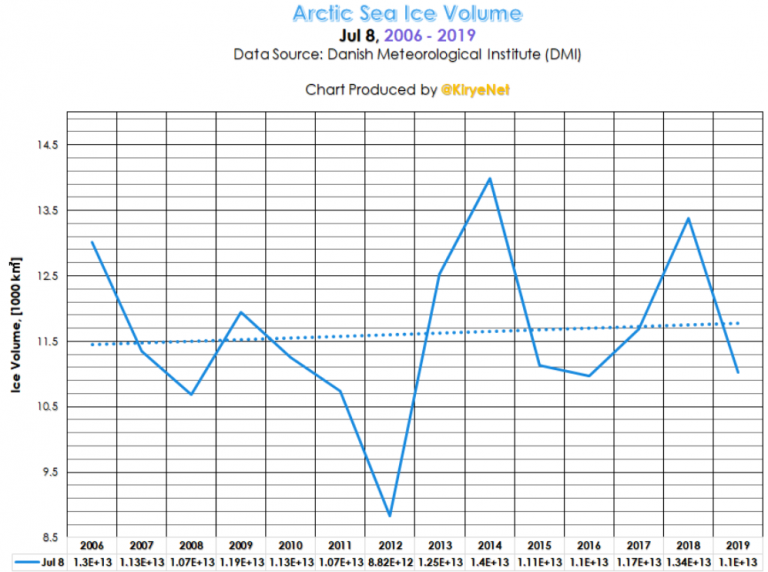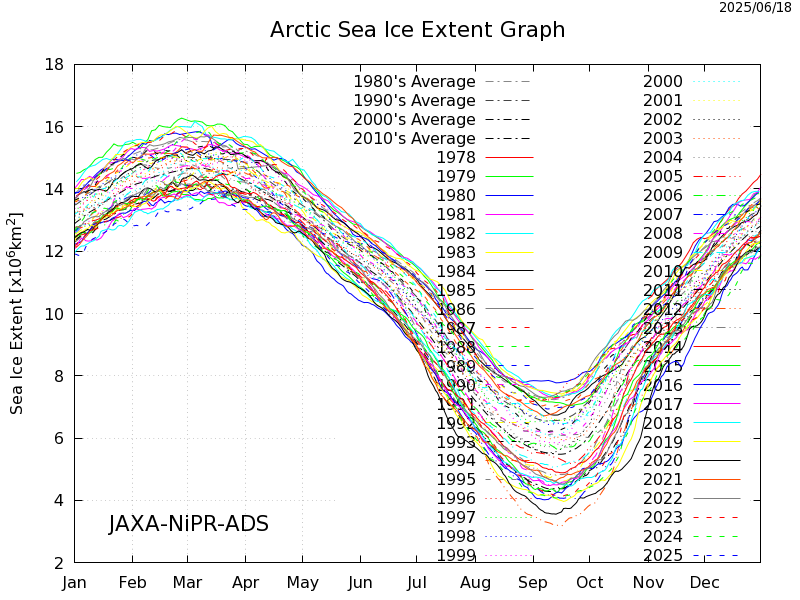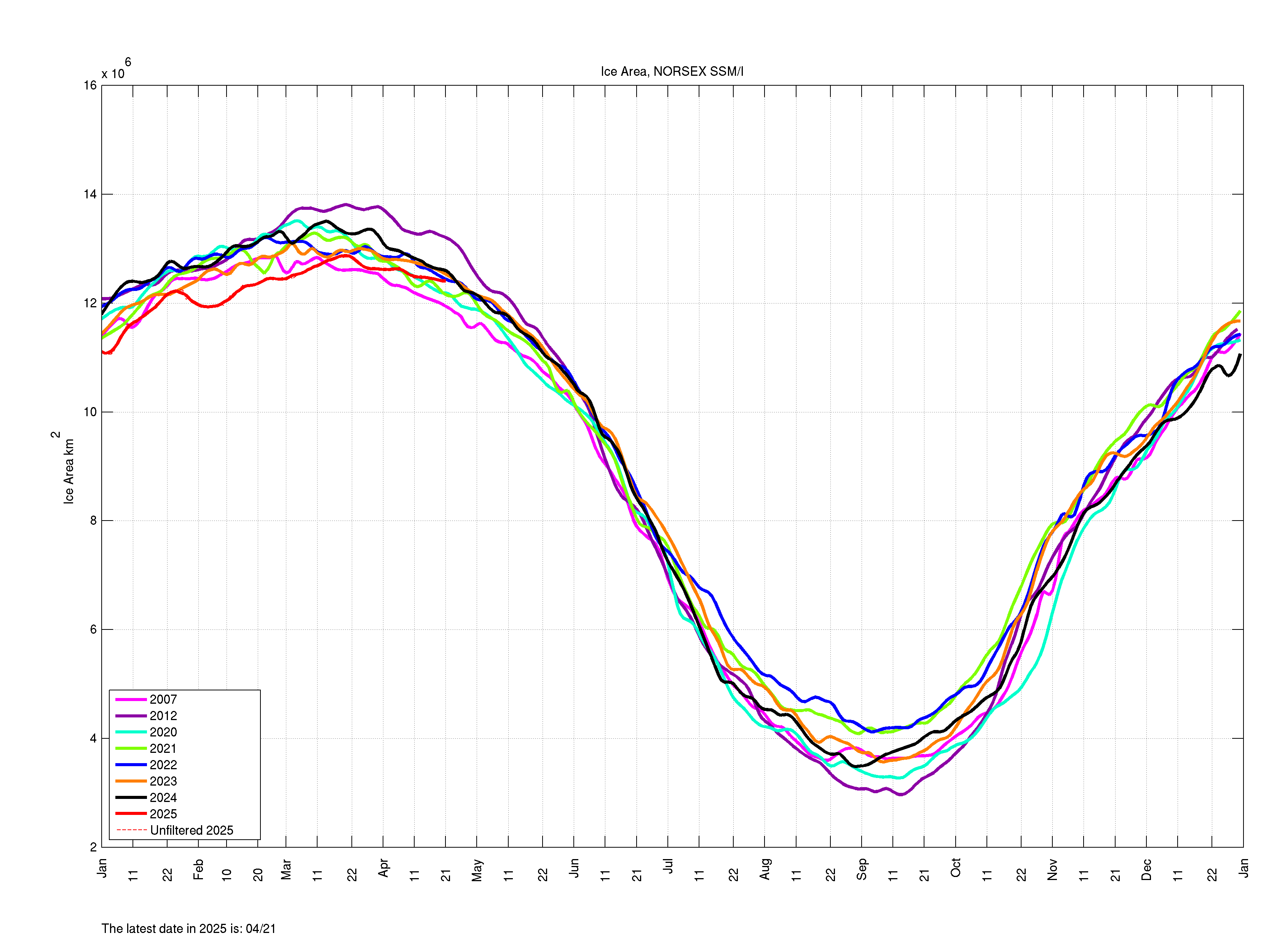- Joined
- Jan 28, 2013
- Messages
- 94,823
- Reaction score
- 28,342
- Location
- Williamsburg, Virginia
- Gender
- Male
- Political Leaning
- Independent
[h=3]Early July Arctic ice volume on the rise![/h]Also early July Arctic sea ice has refused to melt further for 15 years now.

Japanese climate blogger Kirye plotted the data back to 2006, and we see an upward trend for July 8 Arctic sea ice volume:

[h=3]Growing ice over past 10 years[/h]The rising trend becomes even pronounced when we look at the last 10 years. This ice cold reality flies in the face of all the wild claims of a melting Arctic we often hear in the media.

Japanese climate blogger Kirye plotted the data back to 2006, and we see an upward trend for July 8 Arctic sea ice volume:

[h=3]Growing ice over past 10 years[/h]The rising trend becomes even pronounced when we look at the last 10 years. This ice cold reality flies in the face of all the wild claims of a melting Arctic we often hear in the media.




